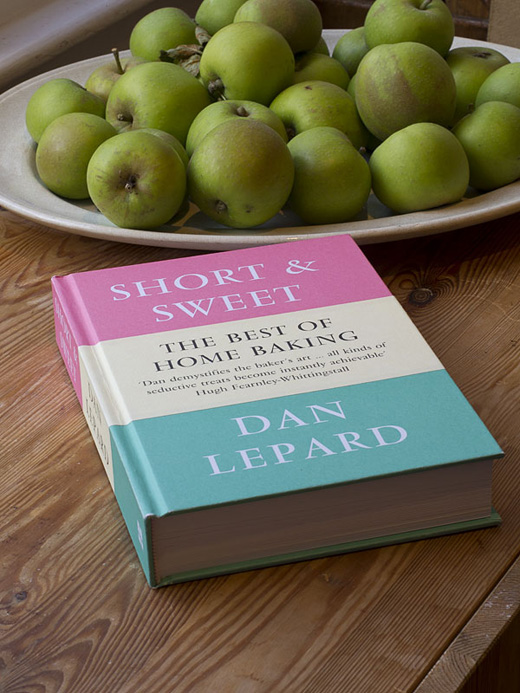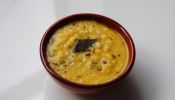The commonly known Japanese stock, dashi uses kombu (seaweed) and bonito flakes (fish), to make either the delicate very clear stock ichiban dashi, or the stronger fuller body flavoured niban dashi. It’s seriously worth making dashi from scratch, so simple and the flavour is beautifully clean, you can not compare it to instant dashi sachets for sale.
This version using shiitake mushrooms and kombu is less well known but a great one to have for vegetarian and vegan dishes, or as in my case for allergy sufferers. In the Japanese Buddhist cuisine vegetarian dashi can be made from a variety of dried vegetables but this combination is apparently a popular one. Shiitake and kombu are excellent together because both ingredients are super rich in compounds that make up the umami flavour.
Dried Shiitake Mushrooms
I can’t buy whole dried shiitake mushrooms needed for this stock in the supermarkets, I’ve only seen sliced dried shiitake, for whole ones I have to visit a Japanese or Chinese grocery shops or buy online. Once I unfortunately used the sliced shiitake and created the most horrid bitter stinky over-powering stock that went straight down the sink. Too strong.
If sliced shiitake is the only type you can get hold of, then my advice would be to play around with tiny amounts, start out by using 10-15 grams (half an ounce) and see if it will provide the mild mushroom flavour the stock should have.
While in the middle of writing this post realised I have someone on twitter selling organic shiitake mushrooms, fresh and dried Maesyffin Mushrooms here.
Don’t Use Fresh Shiitake
Fresh shiitake mushroom do not have the depth of flavour as the dried ones. It’s in the drying process of the mushroom which makes dried shiitake an excellent source of umami. In the dehydration of the mushroom the substance riboucleotides is broken down and the enzymes release guanylate. Guanylate is a major component in the flavour of umami.
Water Temperature
When soaking shiitake mushrooms it matters the temperature they’re soak at. If the water is too hot it will stop any further enzyme activity continuing the process of producing guanylate from the ribonucleotides.
The drying process doesn’t provide fully the whole transformation into guanylate, therefore on hydrating the mushrooms the enzymes can continue that process in warm water. If the water is too hot the enzymes will be killed, thus stopping the maximum release of the guanylic acid.
The optimum temperature for hydrating the mushrooms is at 30-40˚C / 86-104 F.
Variety of Dried Shiitake
Depending how much the cup of the shiitake mushroom has been allowed to open while growing it will define the category it falls into; hanadonko, donko, kouko and koushin.
Hanadonko is considered the highest quality because of the lower temperatures used for growing and drying, the cap is quite closed and thick, long soaking time.
Donko dried shiitake has the cap half open, also relative thick caps.
Kouko the cap is more open than the previous two.
Koushin are dried shiitake mushroom who’s caps have been allowed to open the furthest, it’s the thinnest of all the varieties, needs less soaking time and good in stir-fries.
Mushroom Stock
The mushroom stock can be made couple of ways, soaking the mushrooms in room temperature water all day / overnight, or if speeding up the process bring the water to 30-40˚C.
- 60-100g whole dried mushrooms
- 2 litres of water approx (30-40˚C it’s just warm to the touch)
Strain the mushroom stock, there will be some tiny gritty bits in the bottom.
Shiitake Dashi
Kombu Seewead for Dashi
It’s hard to come by kombu, and needless to say not all kombu is the same quality, but here in the UK beggars can’t be choosers and the two different brand names below were the only two available in the Japanese shop in Soho. You can also buy it in the Japanese Centre shop or online from them.
Water Temperature for Kombu Stock
Below is the water with tiny bubbles showing the right temperature the water should come to with the kombu inside it.
If the water gets beyond this, and that is beyond the temperature of 60-65˚C, other substances will be released into the water like iodine, aldehydes and sulphates which give off unpleasant smells and over-power a natural sweetness in the kombu.
Kombu Stock
Some recipes for dashi stock (ones containing bonito flakes) let the kombu soak in cold water first then bring the water to below boiling point turn off the heat and remove the seaweed. In this vegetarian recipe here the kombu is meant to stay at this very low temperature for an hour.
- 30-40 grams kombu
- 2 litres of water
Add the kombu to the water bring it to 60˚C and keep it there for an hour, the hard part is keeping the temperature right.
The water will form a thin skin and little bubbles showing. If it’s too hot will start to produce white scum. It should never boil.
Remove the kombu and strain the stock.
Shiitake Dashi & Kombu Dashi
You can mix 1 part shiitake to 2 parts kombu stock, or use in equal amounts.














































{ 2 comments… read them below or add one }
Great post and very interesting.
However, you are teasing us with photos of that fab looking soup and not giving the recipe too LOL.
Hi darling Debs, I have photos of the miso noodle dish here and will post..it’s especially important I do post it since the girls love the dish and keep asking to be put up on here.